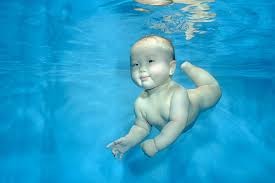We present you interesting facts that will be useful for everyone and help to understand the characteristics of newborns, infants, and children of different ages.
And so interesting features and needs of children:
1. Interaction between the child and mother
A foreign medical study showed that if during pregnancy the mother becomes ill or suffers from damage to a certain organ, the child sends stem cells from the womb of the mother, which restore the necessary organ.
2. The invention for children
In the 1920s, a very strange invention was very popular in America: children's cells that hung from the windows of apartment buildings and "allowed" mothers to save time on an extra walk.
3. Brazilian practice
Brazil has a centralized breastfeeding service for mothers who are unable to breastfeed their baby.
4. Taste receptors
The newborn has three times more taste buds than the average adult.
5. Benefit of breastfeeding
According to a 2013 study, breastfeeding can reduce the woman's risk of developing Alzheimer's disease by 22%.
6. Lack of dreams
Doctors-neurologists, based on their research, believe that babies do not see dreams during the first few years of their life.
7. A terrible history of medicine
Until 1985, doctors believed that babies do not feel pain, so there are historical examples when operations were performed without anesthesia.
8. Young Football Star
The youngest professional football player was a 20-month-old child, with whom the Belgian team contracted.
9. Medical supervision
Studies have shown that women who during pregnancy began to snore have a high probability of having a baby with less weight.
10.Interesting comparison
In the body of the baby there are 60 bones more than in the body of an adult
11. Blood circulation
In the body of a newborn baby, the amount of blood circulates, which can easily fit into one cup.
12. Mountain diapers
From the birth of a child to accustoming him to using the toilet, the child uses an average of 8 thousand diapers.
13. Absence of bacteria
Children are born without any bacteria in their body.
14. Lack of sleep for parents
Young parents lose or lose approximately 4380 hours of healthy sleep in the first two years of their life, which is equivalent to 6 months of life.

15. The world in black and white colors
Scientists suggest that the eyes of newborn babies allow them to see the world only in black and white colors during the first few months of life.
16. The fact of left-handed people
Medical research has shown that premature babies often become left-handed, and.
17. A man with a golden arm
Gold donor James Harrison passed his blood more than 1000 times for his life and helped save the lives of more than 2 million babies and their young mothers with Rhesus-Conflict.
18. The world problem
Approximately every 30 seconds, in China, gives birth to a child with a birth defect.
19. Who photographed the most?
In the period from 1838 to 1960. Most of the photographs taken (more than 50%) were children or infants.
20. Amazing Birthdates
The magic of numbers: a woman from Michigan, the USA gave birth to children on 08.08.2008, 09.09.2009 and 10.10.2010.
21. The taste of salt
The first 4 months of his life the child can not taste the taste of salt. Scientists associate this delay with the development of the kidneys, which at this age only begin to perceive sodium.
22. Children's Smiles
Human babies are the only primates that smile to their parents.
23. The number of newborns on a world scale
According to extras, on planet Earth, the child is born every three seconds.
24. It's worth fighting foreveryone's life
Among the premature babies, there are many people who have changed the world by their activities: Charles Darwin, Isaac Newton, Napoleon Bonaparte, Mark Twain, Albert Einstein, Jean-Jacques Rousseau, Winston Churchill, Pablo Picasso, Auguste Renoir and Johann Goethe.
25. Record birth rate
# History knows a case where one woman in her life gave birth to 69 children. From 1725 to 1765, a Russian woman gave birth to 16 pairs of twins, 7 pairs of triplets, and 4 pairs of quadruplets.
26. The first child in Antarctica
In 1978, the first child was born in Antarctica: Emilio Marcos Palma.
27. A popular gesture
In scientific society, there is a theory that shaking the head from side to side began to mean "no" thanks to the analogy of a child who also turns his head away from food when he is already full.

28. Do not worry.
At birth, children do not have kneecaps. The kneecaps complete their formation only by the age of 6 months.
29. Financial costs
In the US, it was estimated that in the first year the American parents on average have an additional childcare cost of $ 7,000 (diapers, baby food, and daycare). This amount does not include the cost of medical care.
30. Grasping reflex
The clench of the baby's tiny hand is so strong that it can support the entire weight of his body.
31. Work of the heart
At the moment of the birth of the child, his mate beats at a speed of 180 bpm. Within a few hours, the heart rate drops to 140 beats/min. At the age of 1 year, the heart rate is already 115 beats per minute, and the average number of strokes in an adult in a state of calm is 70-80 beats/min...
32. A vision of the child
Vision is the least developed feeling of a newborn. Newborn babies can only see well at a distance of only 20-35 cm. At the age of three months, they are best seen with the help of peripheral vision. Children may also have difficulty in distinguishing color tones.
33. Development of the human brain
After birth, the brain increases its size more than twice to reach the age of 1 year to reach 60% of the brain size of an adult. The brain reaches its full size even at preschool age but does not complete its development until the age of almost 20-25 years.
34. Blue eyes of newborns
The color of the human eye is manifested due to colored particles that are located behind the iris and in the outer fabric of the iris. Melanin (pigment) in the main tissue in most cases is not fully developed at birth, so most babies, regardless of their genetics, are born with blue eyes. At the age of 6-12 months, melanin is activated and the genetic color of the child's eyes is manifested (blue, brown, green, etc.).
35. Child's breathing
The breathing speed of a newborn baby is about 40 times per minute, while adults breathe 12-20 times per minute.
36. Left-handed vs. right-hander
10% of the inhabitants of the planet are left-handed, so pay attention to the child's main hand from early childhood. 22% of twin children are left-handed.
37. Children and foreign languages
Children have a wonderful ability to learn a second foreign language. The authoritative edition of Newsweek stated that "a child who did not teach a second language until the age of 10 years is unlikely to ever be able to freely talk on it, as in his own."
38. A product that helps to get pregnant with twins
Sweet potatoes according to research helps to get pregnant with twins. In Africa, there is a tribe in whose diet sweet potato takes the main role, and scientists attribute this to the extremely high rates of twins' birth and the number of multiple births.
39. A ratio of girls to boys
Despite the fact that the chances of giving birth to a boy or girl - 50/50, the real numbers do not always match. Statistics show that on average 105 boys are born for every 100 girls.

